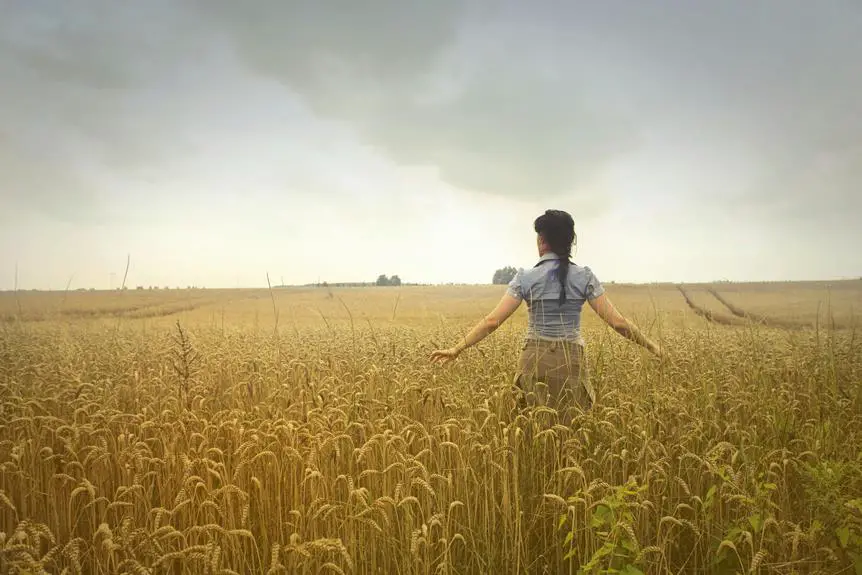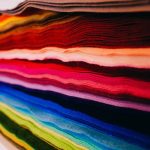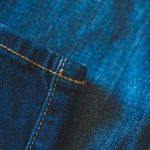When you think about broadcloth, it's easy to overlook the intricate journey this fabric takes from farm to fashion. You might picture the luxurious garments it creates, but have you considered the sustainable farming practices that cultivate the cotton and wool? As you explore the spinning and weaving processes, you'll uncover how this seemingly simple textile evolves with modern trends, all while maintaining its heritage. What lies ahead for broadcloth as fashion continues to shift? The answer might surprise you.
Table of Contents
The Origins of Broadcloth
Understanding the origins of broadcloth reveals its evolution from simple woolen fabric to a staple in fashion. Originally, broadcloth was a luxurious woolen textile, prized for its density and durability. You'd find it woven in England during the Middle Ages, where it became a symbol of status among the wealthy. As you explore its history, you'll notice that the production process was labor-intensive, with skilled artisans crafting the fabric by hand.
Over time, broadcloth transformed, incorporating various weaving techniques that enhanced its versatility. By the 16th century, it wasn't just a fabric for the elite; it became widely accessible, catering to the growing middle class. You might appreciate how this shift allowed broadcloth to transition from a luxury item to everyday wear.
As the Industrial Revolution took hold, mechanized looms further increased production, making broadcloth even more popular. This evolution from a niche luxury to a staple in wardrobes highlights the fabric's adaptability.
Today, it's made from both wool and cotton, reflecting the diverse influences of its rich history while maintaining its classic appeal. Broadcloth remains a testament to the interplay of tradition and innovation in the textile industry.
Cultivation of Cotton and Wool
When you think about broadcloth, consider how cotton and wool are cultivated.
Understanding the cotton growing process, wool harvesting techniques, and sustainable farming practices can give you a clearer picture of what goes into your fabrics.
Let's explore these essential points to appreciate the journey from farm to fashion.
Cotton Growing Process
The cotton growing process starts with selecting the right seeds and preparing the soil for planting.
You'll want to choose high-quality seeds that are suited for your climate and soil type. After selecting the seeds, it's time to prepare the soil. This involves tilling to aerate the ground and adding nutrients to create an ideal growing environment.
Once you've prepared the soil, follow these steps:
- Planting: Sow the seeds in rows, ensuring they're spaced properly to allow for healthy growth.
- Watering: Keep the soil consistently moist, but avoid overwatering. Cotton thrives in well-drained soil.
- Weeding: Regularly check for weeds that compete for nutrients. Manual weeding or using herbicides can help maintain the health of your cotton plants.
- Fertilizing: Apply fertilizers as needed to promote vigorous growth, focusing on nitrogen, phosphorus, and potassium.
As the plants grow, keep an eye out for pests and diseases.
With proper care, your cotton plants will flourish, leading to a bountiful harvest ready for the next stages of production.
Wool Harvesting Techniques
Harvesting wool requires skill and precision, ensuring the fleece is collected at the right time for optimal quality. You'll want to time your shearing when the sheep's wool is at its fullest, usually in late spring or early summer. This timing allows the fleece to be both thick and clean, promoting a higher quality product.
When you're ready to shear, gather your tools: sharp shears, a clean surface, and a sack for the wool. Approach the sheep calmly to reduce stress, as a relaxed animal yields better results. Start from the belly and work your way around the body, ensuring you don't nick the skin.
It's crucial to keep the fleece in one piece, as this preserves its structural integrity. After shearing, inspect the fleece for any contaminants like dirt or vegetable matter. Cleanliness is key in maintaining the wool's quality.
Once you've sheared the sheep, you'll sort and store the wool properly to prevent damage. Remember, the way you handle the wool post-harvest affects its final quality, so take your time and do it right!
Sustainable Farming Practices
Sustainable farming practices in the cultivation of cotton and wool focus on minimizing environmental impact while maximizing quality and yield. By adopting these methods, you can contribute to a healthier planet while ensuring the fibers you use are ethically sourced.
Here are four key practices you should consider:
- Crop Rotation: Changing the types of crops grown in a field each season helps maintain soil health and reduces pest infestations. This practice improves biodiversity and reduces the need for chemical pesticides.
- Organic Fertilizers: Using compost or manure instead of synthetic fertilizers enriches the soil naturally, promoting healthier plants and reducing water pollution.
- Water Conservation: Implementing drip irrigation systems and rainwater harvesting can significantly reduce water usage, ensuring that your cotton and wool crops thrive without depleting local water resources.
- Integrated Pest Management (IPM): This approach combines biological control, habitat manipulation, and resistant crop varieties to minimize pest damage while reducing chemical inputs.
Harvesting Techniques
Farmers employ various techniques to efficiently gather cotton, ensuring minimal waste and optimal quality for broadcloth production. One popular method is mechanical harvesting, where machines, equipped with spindles, strip the cotton bolls from the plants. This technique saves time and labor, allowing farmers to cover large fields quickly. However, it's essential to time the harvest right, as cotton needs to be picked when it's fully mature but before bad weather rolls in.
Another method is hand-picking, which, though labor-intensive, allows for better quality control. Workers can selectively harvest the best bolls, reducing the amount of debris mixed in with the cotton. This method is often used in regions where quality is prioritized over efficiency.
Here's a quick comparison of harvesting techniques:
| Technique | Pros | Cons |
|---|---|---|
| Mechanical Harvesting | Fast and efficient | May reduce cotton quality |
| Hand-Picking | High quality control | Labor-intensive and slow |
Spinning and Weaving Process
Once the cotton is harvested, it undergoes a meticulous spinning and weaving process to transform the raw fibers into the smooth, durable fabric known as broadcloth.
First, the cotton fibers are cleaned and separated from seeds and debris. This ensures that only the finest fibers are used.
Next, the cleaned cotton is carded, where it's brushed and tangled to align the fibers. This step prepares the fibers for spinning, which twists them together to create yarn. You'll find that spinning can be done using either traditional methods or advanced machinery, depending on the desired quality.
Once you have the yarn, it's time for weaving. This involves interlacing the yarns to create the fabric. Here's how the weaving process typically unfolds:
- Warping: Long threads are set up on a loom to form the foundation.
- Weaving: Cross threads are passed over and under the warp threads, creating the fabric.
- Finishing: The fabric is washed, dyed, and treated to enhance its durability and look.
- Quality Control: The final broadcloth is inspected for any imperfections before it's ready for fashion applications.
This entire process is crucial in producing high-quality broadcloth.
Fashion Applications of Broadcloth
Broadcloth is frequently seen in fashion collections, prized for its versatility and smooth texture that elevate a wide range of garments. You'll find it used in everything from tailored shirts to chic dresses, making it a staple for both casual and formal occasions. Its tight weave provides a crisp finish that's perfect for creating structured pieces, ensuring that your outfits maintain their shape and elegance.
When you choose broadcloth, you're opting for a fabric that drapes beautifully and feels comfortable against the skin. It's lightweight yet durable, which means it withstands wear while maintaining a polished look. Designers often incorporate broadcloth into their collections for its ability to hold vibrant colors and patterns, making it an excellent choice for eye-catching prints.
In addition, broadcloth's easy care properties make it appealing for everyday wear. You won't need to worry much about wrinkles, so it's ideal for travel or busy lifestyles. Whether you're dressing up for a special event or keeping it casual, broadcloth adapts seamlessly to your style, ensuring you always look your best.
Embrace this fabric in your wardrobe, and enjoy its timeless appeal.
The Future of Broadcloth in Fashion
As fashion evolves, you can expect broadcloth to remain a key player, adapting to new trends while retaining its classic appeal. Designers are increasingly recognizing its versatility, which makes it suitable for various styles and occasions.
With sustainability becoming a priority, broadcloth's natural fibers make it a popular choice among eco-conscious consumers.
Here are four ways broadcloth is shaping the future of fashion:
- Sustainable Practices: More brands are focusing on eco-friendly sourcing and production, making broadcloth a sustainable option that resonates with shoppers.
- Innovative Textures: Expect to see broadcloth being reimagined with new textures and finishes, elevating its aesthetic appeal and making it trendy.
- Smart Fabrics: Technology is integrating with textiles, and broadcloth might soon incorporate features like moisture-wicking or stain resistance, enhancing its functionality.
- Inclusivity in Design: As fashion embraces diversity, broadcloth will be utilized in various styles that cater to all body types, ensuring everyone can enjoy its timeless elegance.
In this evolving landscape, broadcloth's adaptability will ensure its continued relevance in the fashion world.
Frequently Asked Questions
What Are the Environmental Impacts of Broadcloth Production?
The environmental impacts of producing broadcloth include water consumption, pesticide use, and carbon emissions. You should consider sustainable practices, like organic farming and eco-friendly dyes, to minimize these effects while enjoying high-quality fabrics.
How Does Broadcloth Compare to Other Fabrics in Terms of Durability?
When comparing durability, you'll find broadcloth is quite robust, often outlasting lighter fabrics. Its tightly woven structure resists wear and tear, making it suitable for both everyday clothing and more demanding applications.
What Care Instructions Are Recommended for Broadcloth Garments?
To care for broadcloth garments, you should machine wash them in cold water, tumble dry on low, and iron on a medium setting. Avoid bleach to preserve the fabric's color and integrity.
Are There Any Ethical Concerns Regarding Broadcloth Sourcing?
When considering ethical concerns about sourcing, you should examine labor practices, environmental impact, and sustainability. It's important to ensure that the materials you choose support fair treatment of workers and minimize harm to the planet.
Can Broadcloth Be Recycled or Repurposed After Use?
Yes, you can recycle or repurpose broadcloth after use. Consider transforming it into bags, quilts, or home décor items. Many local recycling programs also accept fabric, so check your community's guidelines for proper disposal.
- How Does Ring Spun Cotton Affect Garment Fit and Shape Retention? - August 13, 2024
- What Are the Challenges in Producing Ring Spun Cotton? - August 13, 2024
- Is Ring Spun Cotton Suitable for Plus-Size Clothing? - August 13, 2024







